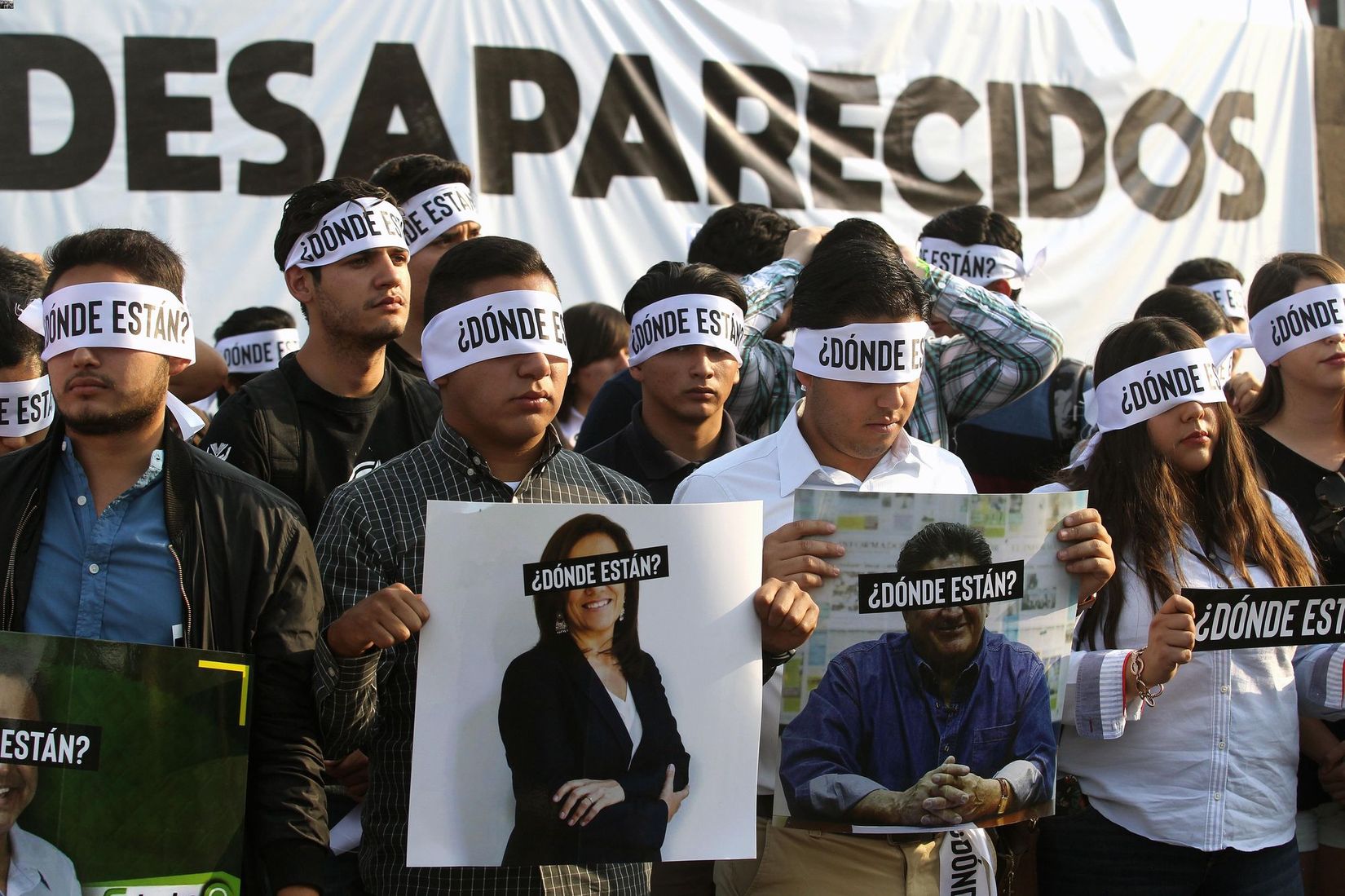
Why do people disappear? Disappearances have puzzled humanity for centuries, from entire colonies vanishing without a trace to individuals who seem to evaporate into thin air. These mysterious events stir our curiosity and sometimes our fears. Whether it's the lost Roanoke Colony, the enigma of D.B. Cooper, or the unsettling cases of enforced disappearances, each story leaves us with more questions than answers. The psychological toll on families and communities is immense, and the investigative challenges are daunting. Yet, with advancements in technology and global cooperation, efforts to solve these mysteries continue. Let's explore 34 intriguing facts about disappearances that shed light on this perplexing phenomenon.
Key Takeaways:
- Disappearances, from historical mysteries to modern cases, continue to captivate our imagination. The Roanoke Colony and D.B. Cooper are just a few examples of the enduring fascination with vanishing acts throughout history.
- Enforced disappearances are a grave violation of human rights, leaving families and communities with unanswered questions. Global efforts and technological innovations play a crucial role in addressing and investigating disappearances worldwide.
The Roanoke Colony Disappearance
Disappearances have fascinated people for centuries. One of the earliest and most famous cases is the mysterious vanishing of the Roanoke Colony.
- In 1587, Governor John White led over 100 settlers to Roanoke Island in North Carolina to establish the first permanent English colony in the New World. When White returned in 1590 after a three-year absence, the entire colony had vanished without a trace. The only clues left behind were the word "CROATOAN" carved into a post and the letters “C-R-O” etched into a tree. Archaeologists suggest the colony was assimilated into native tribes, but the exact fate of the settlers remains unknown.
Historical Disappearances
History is filled with tales of individuals who vanished without a trace, leaving behind only questions and theories.
-
Lao Tzu, the founder of Daoism, is said to have disappeared in the 6th century BCE. According to legend, he saw his society becoming increasingly corrupt and decided to leave, dressing as a farmer and riding away on a water buffalo. His teachings emphasized inner knowledge and balance with the universe, but his own disappearance remains shrouded in mystery.
-
In 1981, the National Museum of American History discovered that a set of George Washington’s false teeth were missing from their collection. The bottom plate dentures were later found in an employee-only area, but the top half remains missing to this day. Washington’s dentures were made of gold and ivory, making them valuable beyond their historical significance.
Unsolved Mysteries
Some disappearances have become legendary, capturing the public's imagination and spawning countless theories.
- In 1971, a man known as D.B. Cooper hijacked a Boeing 727 aircraft and demanded a ransom. After the FBI met his demands, Cooper instructed the pilot to take off again. While the skeleton crew was in the cockpit, Cooper opened the airlocked door and jumped out, never to be seen or heard from again. Despite a nationwide manhunt, no trace of Cooper was ever found.
Enforced Disappearances
Enforced disappearances are a grave human rights violation where individuals are taken into custody by state agents or their proxies and are never seen again.
- According to the Convention for the Protection of All Persons from Enforced Disappearance, enforced disappearance places the disappeared person outside the protection of the law. The Committee on Enforced Disappearances and the Working Group on Enforced or Involuntary Disappearances work to address these cases, requiring detailed reports from families, governments, and other reliable sources.
Global Statistics on Missing Persons
The number of missing persons worldwide is staggering, with thousands of cases reported annually.
- As of 2014, an estimated average of 90,000 people in the United States are missing at any given time, with about 60% being adults and 40% being children. In Canada, the number of missing-person cases is smaller but the rate per capita is higher, with an estimated 71,000 reported in 2015. In the United Kingdom, it was estimated in 2009 that around 275,000 Britons go missing every year.
Mysterious Disappearances Post-1990
Since the 1970s, many individuals around the world have disappeared, whose whereabouts and condition have remained unknown.
- Many who disappear are eventually declared dead in absentia, but the circumstances and dates of their deaths remain a mystery. Some of these people were possibly subjected to forced disappearance, but in some cases, information on their subsequent fates is insufficient.
High-Risk Groups
Certain groups are more vulnerable to disappearances, including prostitutes and homeless individuals.
- Prostitutes are often victims of serial murder and may not be reported as missing due to outstanding warrants or transient lifestyles. Homeless persons, especially those with mental illness, may become estranged from family and friends, leading to fewer missing-person reports.
Notable Cases
Some disappearances have garnered significant media attention and public interest due to their mysterious nature.
-
Maura Murray, a nursing student at the University of Massachusetts, disappeared on February 9, 2004, after a car accident in Woodsville, New Hampshire. Despite extensive searches and investigations, her disappearance remains unsolved. Her case highlights the challenges in finding missing persons, especially when they leave behind few clues.
-
Maciej Berbeka, a Polish mountaineer, disappeared on March 6, 2013, while descending Broad Peak in Pakistan. His body was never found, and he was declared dead two days later. This case underscores the risks faced by adventurers in remote areas and the difficulties in recovering bodies in such locations.
-
Federico Tobares, an Argentine chef, disappeared on June 5, 2013, while driving from Puerto Vallarta to Guadalajara, Mexico. His disappearance was reported by a co-worker and friend, making him the first Argentine to disappear in Mexico. This case highlights the challenges in investigating disappearances across international borders.
-
Maureen Kelly, a 19-year-old woman, left her campground in the Gifford Pinchot National Forest in Washington state on June 9, 2013, stating she was going on a "spiritual quest." She was last seen wearing only a fanny pack containing knives, matches, and a compass. Her disappearance remains unexplained, and she has not been seen since.
-
Immaculate Basil, a 27-year-old woman, disappeared from the Kuz Che Reservation in Canada on June 14, 2013. Her case has generated numerous theories, including animal attacks and murder. The lack of concrete evidence has left her family and community with many unanswered questions.
-
Marie-José Benitez and her adult daughter Allison disappeared from Perpignan, France on July 14, 2013. Their husband and father, Francisco Benitez, initially reported that they had traveled to Toulouse and switched off their mobile phones after a family argument. However, no evidence supports this claim, and Francisco Benitez later committed suicide, becoming the prime suspect in their disappearance.
-
In Smiths Falls, Ontario, a series of unexplained disappearances has left the community in a state of uncertainty. Lawrence Bertrim disappeared in the fall of 2022, followed by Robbie Thomson in October 2023. The body of Steve Tate, an acquaintance of Bertrim and Thomson, was later found in a ditch along Highway 15. Despite ongoing investigations by the Ontario Provincial Police, no arrests have been made, and rumors have swirled through the community.
Psychological Implications
Disappearances can have profound psychological implications for families and communities.
- The uncertainty and lack of closure can lead to anxiety, depression, and even trauma. The case of Maura Murray, for example, has had a lasting impact on her family and friends, who continue to seek answers about her disappearance.
Investigative Challenges
Investigating disappearances is often challenging due to the lack of evidence and the need for cooperation from multiple parties.
- In the case of enforced disappearances, victims' families must navigate complex legal and bureaucratic processes to seek justice. The Working Group on Enforced or Involuntary Disappearances provides a framework for reporting these cases, but the process can be lengthy and difficult.
Community Impact
Disappearances can significantly impact local communities, leading to widespread speculation and rumors.
- In Smiths Falls, the lack of information from police has fueled the rumor mill, causing distress for the families of the missing individuals. This highlights the importance of clear communication from authorities in such cases.
Role of Technology
Technology has become a crucial tool in investigating disappearances.
- The use of doorbell cameras, dashcams, and other video recordings can provide valuable evidence. In the case of Robbie Thomson, the Smiths Falls police initially opened an investigation but later handed it over to the OPP's Criminal Investigation Branch, which issued a call for any potentially relevant video recordings.
High-Risk Areas
Certain areas are more prone to disappearances due to their remote locations or high crime rates.
- Broad Peak in Pakistan, where Maciej Berbeka disappeared, is one such location. The lack of infrastructure and limited access to medical care make these areas particularly hazardous for adventurers and travelers.
Serial Murders
Serial murders often involve disappearances, particularly of vulnerable groups like prostitutes.
- The Green River serial-murder case in the United States is an example where many victims were not reported as missing until after their deaths. This highlights the need for comprehensive missing-persons policies that include high-risk groups.
Homeless Persons
Homeless individuals are another high-risk group for disappearances.
- Their transient lifestyles and lack of stable addresses make it difficult for authorities to track them. The Vancouver Police Department has modified its policy on missing persons to include homeless individuals as high-risk cases, emphasizing the need for specialized care and support.
International Cooperation
Disappearances often involve international borders, requiring cooperation between different countries.
- The case of Federico Tobares highlights the challenges in investigating disappearances across borders. International agreements and organizations like the Working Group on Enforced or Involuntary Disappearances play a crucial role in facilitating this cooperation.
Family Support
Families of missing persons often face significant emotional and psychological challenges.
- The case of Maura Murray’s family illustrates the long-term impact of her disappearance, with ongoing efforts to seek answers and closure. Support groups and counseling services are essential in helping these families cope with their situation.
Community Engagement
Community engagement is vital in investigating disappearances.
- In Smiths Falls, local residents have formed a Facebook group to share information and support each other. However, the lack of reliable news sources has contributed to the spread of rumors, emphasizing the need for accurate information from authorities.
Police Investigations
Police investigations into disappearances require careful planning and execution.
- The OPP’s investigation into the Smiths Falls cases involves multiple teams and ongoing efforts to gather evidence. Clear communication from police is essential to manage public expectations and prevent speculation.
Victim Identification
Identifying victims of disappearances can be challenging, especially in cases involving serial murders.
- The use of DNA analysis and other forensic techniques has improved victim identification, but it remains a complex process. The Green River serial-murder case highlights the difficulties in identifying victims who were not reported as missing until after their deaths.
Legal Frameworks
Legal frameworks play a crucial role in addressing disappearances.
- The Convention for the Protection of All Persons from Enforced Disappearance provides a global standard for addressing enforced disappearances. National laws and policies must align with these international standards to ensure justice for victims and their families.
Public Awareness
Public awareness campaigns can help prevent disappearances by educating people about the risks and how to stay safe.
- The ASU Center for Problem-Oriented Policing provides guides on missing persons, highlighting factors that increase the risk of disappearances and strategies for prevention.
Support Services
Support services are essential for families and communities affected by disappearances.
- Counseling services, support groups, and advocacy organizations provide emotional support and practical assistance. The International Commission on Missing Persons offers support services to families of missing persons worldwide.
Media Coverage
Media coverage can significantly impact public perception and the investigation process.
- In Smiths Falls, the closure of the local newspaper and Meta’s ban on Facebook posts by Canadian news outlets have contributed to an information free-for-all, fueling rumors and speculation.
Community Resilience
Communities affected by disappearances often show remarkable resilience.
- In Smiths Falls, residents have come together to support each other and share information. This community spirit is crucial in managing the emotional impact of disappearances and ensuring that investigations are thorough and effective.
Technological Innovations
Technological innovations continue to play a crucial role in investigating disappearances.
- The use of drones, satellite imaging, and other advanced technologies can help locate missing persons and gather evidence. These tools are particularly useful in remote areas where traditional methods may be ineffective.
Global Efforts
Global efforts to address disappearances are ongoing.
- The Working Group on Enforced or Involuntary Disappearances works tirelessly to document and address these cases, while organizations like the International Commission on Missing Persons provide support services to families worldwide. These efforts underscore the international community’s commitment to ensuring justice and closure for victims of disappearances.
The Enigma of Disappearances
Disappearances have always fascinated and troubled us. From the Roanoke Colony to D.B. Cooper, these mysteries highlight the complexities of human life and the challenges in solving such cases. Enforced disappearances remain a serious human rights issue, while high-risk groups like homeless individuals and prostitutes face unique dangers. Investigations are tough, often requiring international cooperation and advanced technology. The psychological toll on families and communities is immense, emphasizing the need for support services and clear communication from authorities. As technology advances, so do the methods for finding missing persons, but the emotional and social impacts remain profound. Understanding these facets helps us better navigate these mysteries and support those affected. Disappearances remind us of the fragility of life and the importance of community and resilience in the face of uncertainty.
Frequently Asked Questions
Was this page helpful?
Our commitment to delivering trustworthy and engaging content is at the heart of what we do. Each fact on our site is contributed by real users like you, bringing a wealth of diverse insights and information. To ensure the highest standards of accuracy and reliability, our dedicated editors meticulously review each submission. This process guarantees that the facts we share are not only fascinating but also credible. Trust in our commitment to quality and authenticity as you explore and learn with us.


